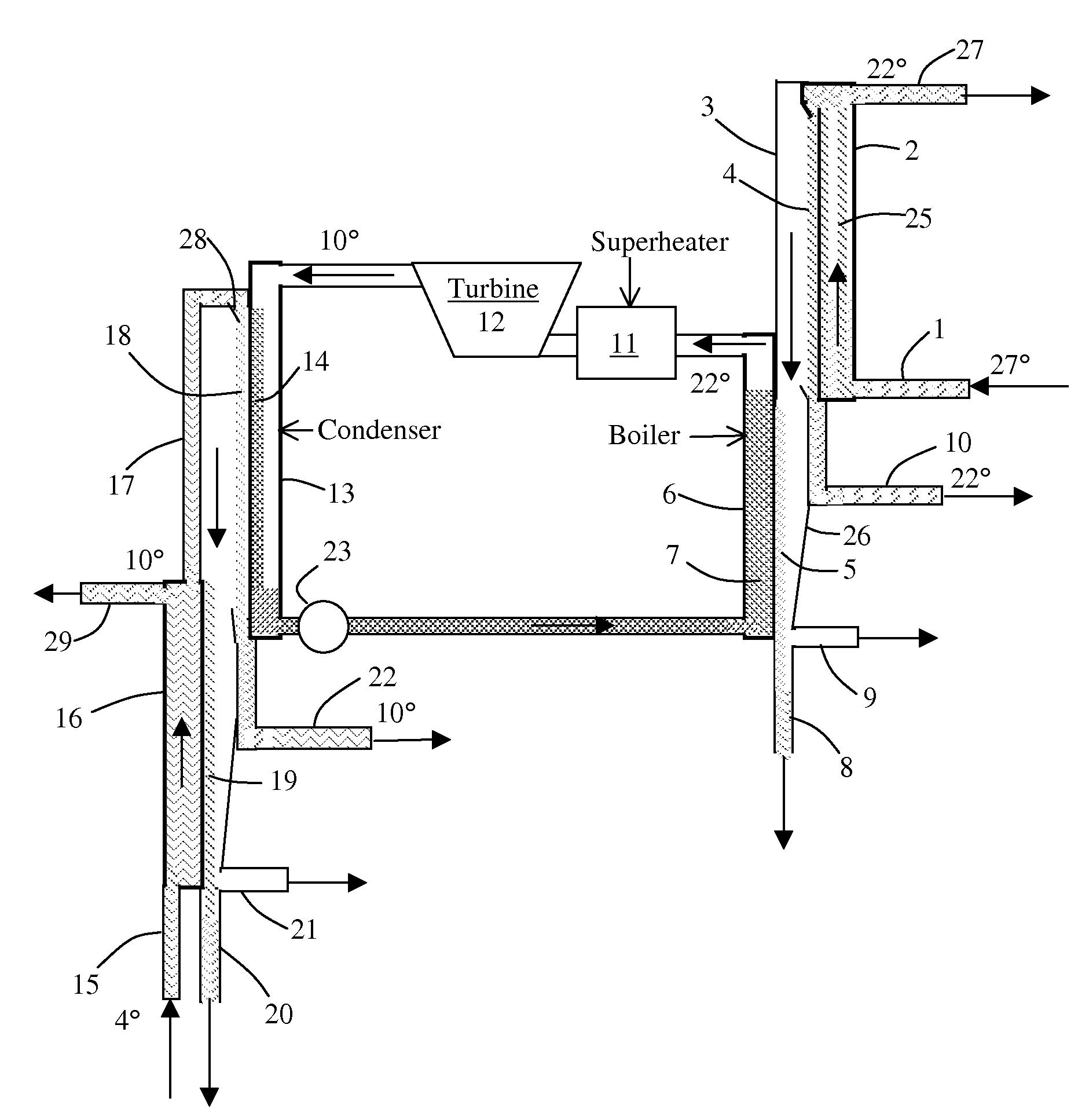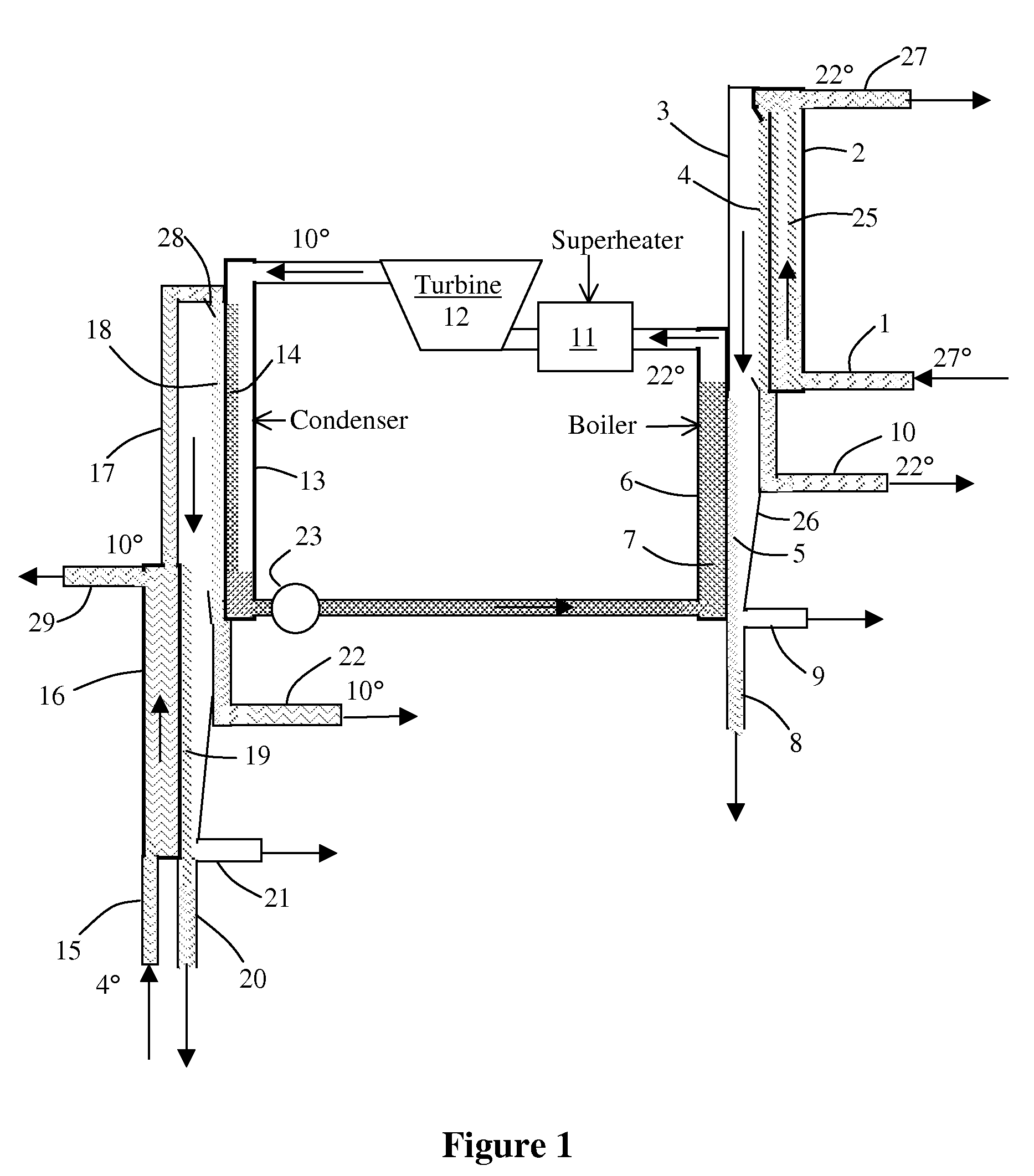Heat Transfer Methods for Ocean Thermal Energy Conversion and Desalination
a technology of ocean thermal energy and transfer methods, applied in the direction of machines/engines, separation processes, barometric condensation, etc., to achieve the effect of eliminating the formation of mineral scal
- Summary
- Abstract
- Description
- Claims
- Application Information
AI Technical Summary
Benefits of technology
Problems solved by technology
Method used
Image
Examples
Embodiment Construction
[0023]FIG. 1 shows schematically an embodiment of the present invention of an OTEC plant that uses water vapor as the heat transfer medium to move heat from the warm ocean water to the working fluid vapor, and uses water vapor as a heat transfer medium to transport heat from the condenser to the cold ocean water. It also shows the collection of fresh water from the warm and cold sides of the OTEC plant.
[0024]As the warm ocean water enters through pipe 1 to a heat exchanger 2, it provides heat through a heat exchanger wall to a film of seawater 4 that is flowing down the other side of the wall in an evacuated chamber 3. The warm water cools as it flows upward through the heat exchanger channel 25, because it is releasing heat to the water film 4. When it gets to the top of the channel 25, part of it then flows down as a film of water 4 on the right wall of the evacuated chamber 3. The rest of the water flows out the discharge pipe 27. Since the water flowing down as a film 4 has a te...
PUM
| Property | Measurement | Unit |
|---|---|---|
| temperature | aaaaa | aaaaa |
| temperature | aaaaa | aaaaa |
| mechanical energy | aaaaa | aaaaa |
Abstract
Description
Claims
Application Information
 Login to View More
Login to View More - R&D
- Intellectual Property
- Life Sciences
- Materials
- Tech Scout
- Unparalleled Data Quality
- Higher Quality Content
- 60% Fewer Hallucinations
Browse by: Latest US Patents, China's latest patents, Technical Efficacy Thesaurus, Application Domain, Technology Topic, Popular Technical Reports.
© 2025 PatSnap. All rights reserved.Legal|Privacy policy|Modern Slavery Act Transparency Statement|Sitemap|About US| Contact US: help@patsnap.com



